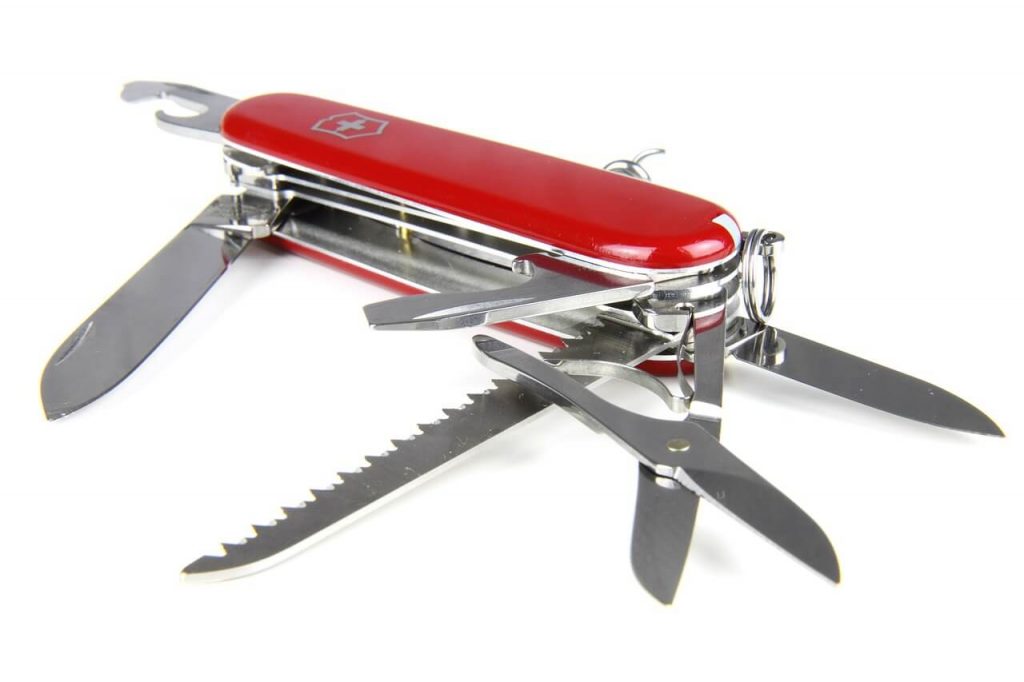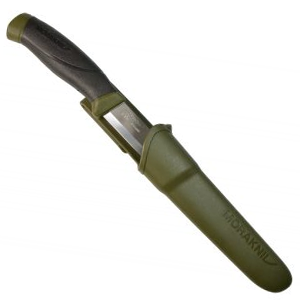You need to know how to sharpen a pocket knife by yourself. Pocket knives are tools that are intended to be used on a daily basis, meaning they will require constant sharpening. Expensive kitchen cutlery and special tools require complicated sharpening processes, so many people who aren’t so knife savvy will take these things in to be professionally sharpened.
The amount of use a pocket knife will see makes it much more practical to do the sharpening yourself.
The best way to sharpen a pocket knife depends on the kind of pocket knife you have. Every knife is different, and many of them come with multiple blades or attachments that are intended to be used for a variety of tasks.
These can’t all be sharpened the same way, and attempting to do so can actually destroy the blade. Take a good look at the pocket knives you want to sharpen, and develop a strategy for each different blade.
Sharpening a Straight Blade
The majority of pocket knives feature at least one straight blade. A straight blade is one with no saw back, no serrated edges, and a traditional drop tip. These blades are the easiest to sharpen, and they only require a few pulls through a decent two phase sharpening system.
If your sharpening system requires a lubricant, apply that first. With most sharpeners, the first slot features coarse edges that sharpen the blade of the knife.
Run it straight through a few times, starting with the back of the knife and working your way up to the tip. If the tip is raised, tilt the knife to sharpen all the way up to the edge of the tip. After five or so pulls, test the sharpness on a piece of cardboard. If it’s still dull, give it two more pulls and test again.
Once you’re comfortable with the level of sharpness, the second slot of the knife sharpener is usually made of a smooth ceramic. This ceramic hones the blade, buffing off any unfinished edges and making the cutting surface look shiny and new again.
Sharpening a Serrated Blade
You cannot run serrated edges through a regular knife sharpener. This is especially true with electric sharpeners. These systems will completely gnarl down a serrated edge, rendering it useless. It can even crack or chip the blade, effectively ruining the whole knife.
Serrated edges need to be individually sharpened. Learning how to sharpen a pocket knife with serrated edges is a little more difficult.
Most compact or portable sharpeners feature a diamond rod at the bottom. This rod starts out thick and tapers down to a thin point. This is so that at least one part of the rod will fit into the serrations on your pocket knife.
Serrations needs to be sharpened on both sides. Run the rod through the serrations until you find the spot that fits comfortably, tilting the knife as you go. Stop right before the rod gets too snug, and repeat on the other side.
There is no real effective way to hone serrated edges, so you may choose to carefully buff them down with a buffing cloth to remove any reside, such as steel or carbon shavings, which came off when you sharpened the serrations.
Be very careful not to slice through the buffing cloth – that’s the easiest way to cut your fingers.

Sharpening Tools on a Multifunction Pocket Knife
Some pocket knives, such as Swiss army knives, have a whole host of attachments that need to be sharpened individually. A lot of these aren’t knives, and aren’t shaped like knives.
This means you have to handle them all differently. The best way to sharpen a pocket knife with attachments is to use a whole host of sharpening tools and really take your time.
Scissors
Some pocket knives feature small scissors. These are great for opening twine wrapped parcels or cutting lengths of cord, but they’re bound to go dull with frequent use.
Fold the scissors out of the knife until they’re locked, and open them all the way. You’ll need to sharpen each side individually. Since the blades of these scissors are very small and delicate, patience is key.
They’re best sharpened with something like a small portable two step sharpener. Don’t push the blades down very hard into the sharpening slot. Instead, delicately touch them and pull them through very fast.
Scissor blades also require the use of a ceramic honing slot to finish the edges.
Be very gentle with small scissors. It’s better to take a long time getting a perfect edge than it is to sharpen in a haste and ruin your scissors. If you destroy the attachment, you won’t be able to replace it.

Can Openers
Most can opener attachments have a small, rounded blade. If you have the patience to do so, it’s best to sharpen along the edges of a can opener with a diamond sharpening rod. The curve won’t allow it to fit into the groove of most knife sharpeners, and you risk destroying the sharp tip by forcing it to fit.
Make sure the can opener is locked into place, and gently run the edges of the can opener along the side of a diamond rod with quick passes. Don’t forget to do both sides. If you have a small ceramic stone, you may choose to lightly hone the edges.
Wire Strippers
Most wire strippers can be sharpened the same way a knife can. Just make sure you aren’t pushing the edges of the wire stripper too deeply into the sharpening slot.
Tilt the sharp edge of the wire stripper against the edge of the sharpening stone to avoid blunt edges. It’s easier to use a handheld coarse stone, which will offer you maximum control.
An Overview of Sharpening Your Pocket Knives at Home
A well maintained pocket knife can last for decades with regular maintenance and expert level sharpening. It’s not difficult to learn to sharpen at home, and doing so can save you a lot of money. Every household needs a few good knife sharpeners, and pocket knives are a great way to practice your sharpening skill before you move on to larger tools.


